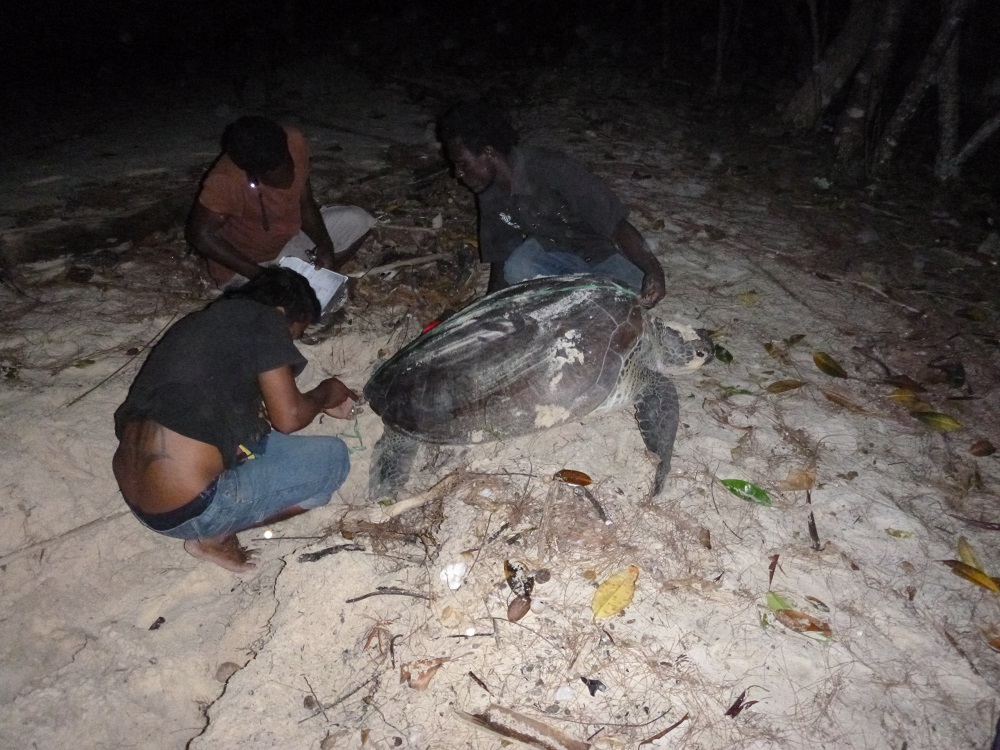Where the turtles lay their eggs. Image by Morgan Pettersson.
For me travel is about exploring new worlds and getting up close and personal with some of the most untouched wilderness on earth.
I consider myself a bit of an eco-warrior, and so my favourite thing to do in any new destination is suss out sustainability projects.
My current work has lead me to the South Pacific nation of the Solomon Islands. The Pacific island nations are already feeling the harsh effects of climate change. It is a reality that few have caused but that many are facing in their daily lives, and the Solomons have not been spared.
Since arriving, I had been hunting around for sustainability or conservation projects here in the Solomons. So it was with excitement that I boarded a tiny, nine-seater plane to the remote Isabel Province to visit an island where efforts are being made to protect the endangered hawksbill turtle.
The Journey
Flying into the airport in Suavanoa, we landed onto a grass field and were met by a member of the Arnavon Islands Conservation Project.
Boat travel is inevitable in the Solomons and commonly accomplished in a small wooden vessel called a “banana boat.”
After three hours of cruising between volcanic islands rising out of the sea, jungle clinging to their sides, we arrived at the Arnavon Islands. The three small islands are nesting grounds for the hawksbill turtle as well as home to other marine and wildlife. On landscape covered in jungle and coconut trees, three wooden huts are the only buildings on the islands.
The Project
The Arnavon Marine Conservation Area was established in 1995, and it was the first marine-protected area of its kind in the South Pacific designed specifically to protect the endangered hawksbill turtle.
There are three community groups who claim the islands as their traditional land. One group is from Isabel Province, one is from nearby Choisel Province, and the third is a community of Micronesians from the Gilbertese who were resettled there in the 1960s.
During the initial government attempts to protect the hawksbill turtle from becoming extinct, the community was not consulted at all. A blanket ban on turtle hunting was imposed on the area.
The communities were not impressed; they viewed the measure as the government taking away their livelihoods, as the meat of the hunted turtles was eaten and the shells sold.
An angry member of the Choisel community decided to take matters into his own hands and, in an act of defiance, burnt down the conservation buildings erected by the government.
It was then that the Solomon Islands government realized it needed to take a different approach. After holding community consultation, all three communities agreed to create a protected area and to stop hunting the turtles.
Now, each month, one conservation officer from each of the three communities comes to the island to work on the project. Check out the video below to hear more about their amazing efforts!
Turtle Monitoring
Not only were we fortunate enough to stay for three nights on a Robinson Crusoe-style island in the middle of nowhere, we were also able to watch conservation in action.
As part of the efforts to boost turtle numbers after past over-hunting, conservation officers spend their days and nights hard at work.
During the day they are out on a small boat, combing the reef for young and juvenile turtles. Because these turtles don’t come up to the beach, they need to be tagged and monitored. This is accomplished by skillfully jumping out of the boat at the right moment and into the water to catch the turtles!
By night, the conservation officers comb the beach for new nests and release nests that are ready to hatch. We were fortunate enough to accompany the conservation officers on their nightime patrol.
On the first night we saw only tracks of a turtle that had already come up the beach to lay.
But on the second night we were incredibly lucky: We came across one hawksbill and one green turtle laying! At over 90 centimeters, they were magnificent to watch, and once they finished and hit the water again, they were so graceful.
It turned out that a nest of over 100 eggs was ready to be released. We sat and watched the tiny turtles wriggle their way up and out of the sand to start their journeys to the sea.

These turtles are impressive! Image by Morgan Pettersson.
Coastal erosion and a rising sea level are already affecting the Arnavon Islands and causing the beach on which the hawksbill and green turtles nest to disappear. Witnessing these environmental changes in addition to the conservation efforts was sobering.
The turtles return to the same beach year after year. If the island disappears, where will they nest?
Yet it was also inspiring to see what was being done to protect the environment in one of the most remote places on earth. It was especially moving to know that the local communities were taking matters into their own hands to protect the future of their environment.
When you think of the Solomon Islands, coconut trees, stunning beaches, and lush landscape come to mind. With proper conservation and preservation, the natural wonders and wildlife of this island nation will remain for years to come.
